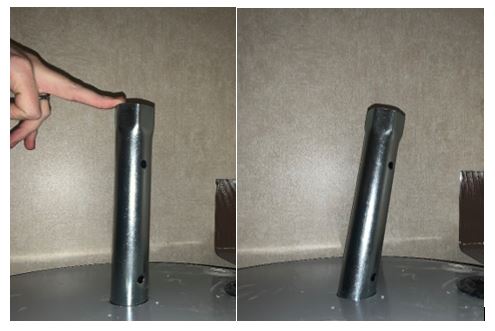I am trying to replace the anode in my water heater. I have drained the tank. I have removed the insulation between the anode and the outer jacket of the heater. I have the 1-1/16" wrench for the anode hex nut, and rods to go through the wrench to provide torque.
View looking down into hole in outer jacket
The problem is that the anode does not line up well with the hole in the outer jacket. So if I put the wrench upright in the hole, it hits the top of the anode nut and doesn't touch the sides at all. If I put the wrench in at an appropriate angle, I can get it to go around the nut, but not in a way that gets a good grip.
How can I remove the anode?
Here are some pictures.
Side views of wrench inserted upright or angled into the jacket hole
(The upright approach does not grip the nut, so the wrench is unstable in that image.)
Top views through wrench inserted upright or angled into the jacket hole
-In the upright option, the wrench ends up on top of the anode nut, so not all sides of the nut are visible.
-In the angled option, the wrench goes around the anode nut, but doesn't grip the sides at the top of the photo.



